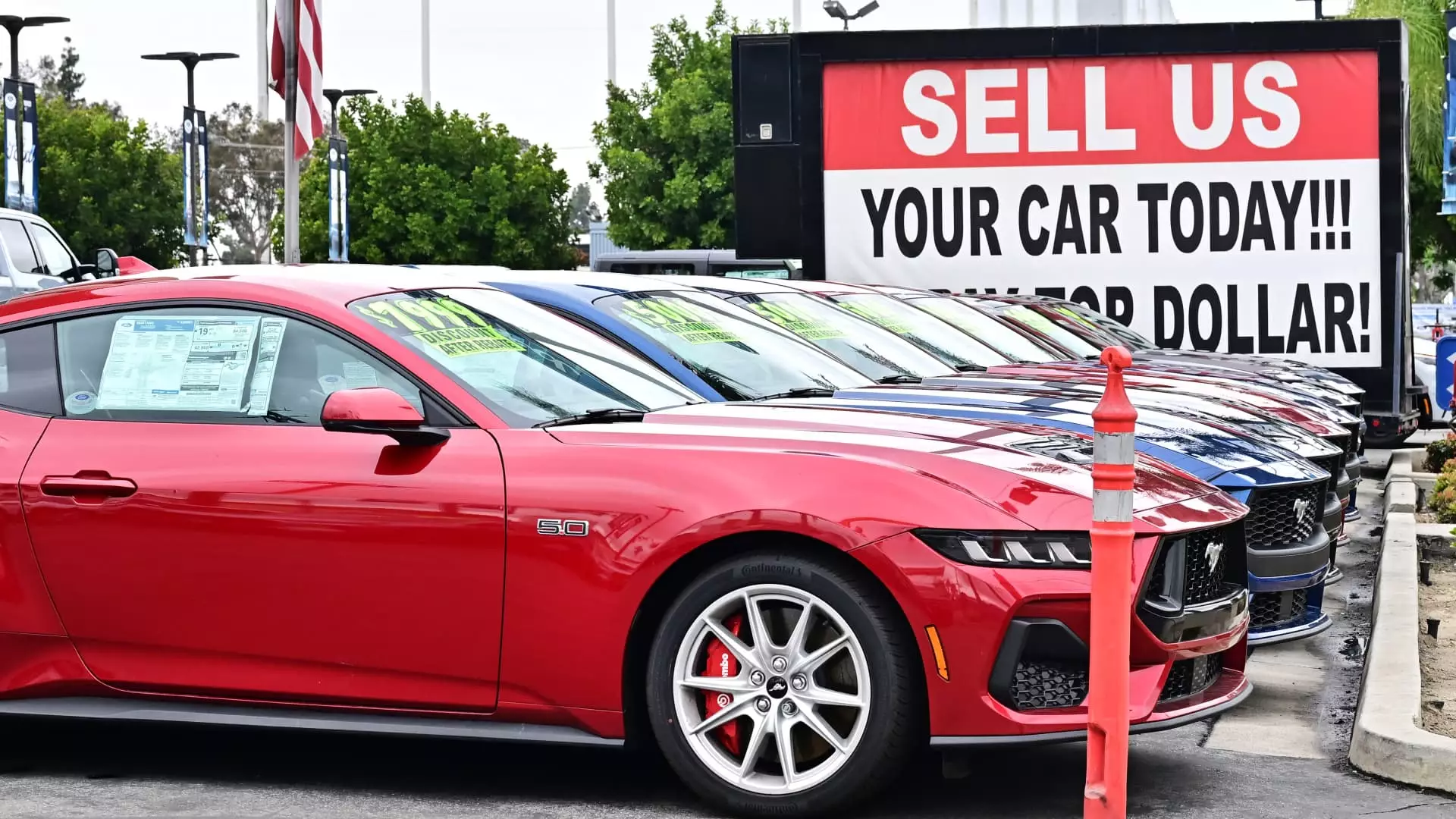In a troubling twist for consumers, used vehicle prices saw a decline in May, dropping 1.5% from the previous month. This shift comes after a steep rise in prices in April, which many had hoped would signal a turning point in the market’s erratic behavior. According to the Manheim Used Vehicle Value Index, while May’s prices reflect a high payoff compared to last year—up by 4%—the decrease raises questions about the sustainability of this inflationary trend. It seems the marketplace is now in a precarious limbo, a resignation to the inevitability of price fluctuations driven by external economic forces rather than consumer demand alone.
Consumer Anxiety and Its Consequences
The recent pause in price hikes can be attributed to heightened consumer anxiety stemming from government-imposed tariffs. These tariffs—25% on imported vehicles and parts—serve as a double-edged sword in the market. While they don’t directly impact the used vehicle segment, their ripple effect on new car prices creates a feedback loop that affects the second-hand market overwhelmingly. This paradox creates a conundrum for consumers who are both desperate and apprehensive. On one hand, they feel compelled to purchase as prices threaten to ascend even further; on the other, they are left navigating a changing landscape rendered volatile by political machinations.
Supply Chain Woes and Consumer Behavior
Adding to the malaise, the used vehicle inventory remains glaringly low at 2.2 million units. Historically, these figures would signal a surge in prices, but the pandemic’s long-lasting impact on auto production has left consumers hanging onto their current vehicles for more extended periods. This trend points to a grim outlook: fewer vehicles available means less competition and stagnant turnover. As Americans cling to their cars with a death grip, the overarching distress reflects a broader societal hesitation, as hope for a manageable economic landscape continues to wane.
The Economic Ripple Effect
While retail used vehicle sales saw a 3% dip from April to May, they still managed a 4% increase when compared to the same month last year. This inconsistency in sales patterns speaks to a deeper economic dissonance, with consumers now engaging in measured purchases more mindful of their financial situations. Cox Automotive reports that prices have finally begun stabilizing, suggesting that after several years of erratic swings, any semblance of order might be restoring itself, albeit under conditions riddled with external pressures.
Implications for the Future
The reality remains that the used car market is tethered to a larger economic framework often influenced by policy decisions that may feel detached from everyday lives. As long as tariffs loom large and mixed signals from the market continue to confuse consumers, the used vehicle sector will likely remain a volatile arena. The question arises: how long can consumers endure this pendulum of uncertainty before deciding that new vehicles—even at elevated prices—offer a less risky venture? As pressures mount, one can only hope that politicians take heed of the far-reaching consequences their decisions wield over an already fragile economy.

